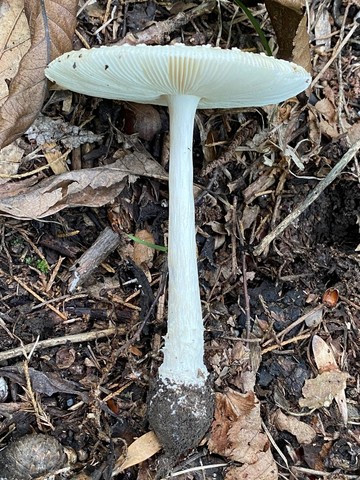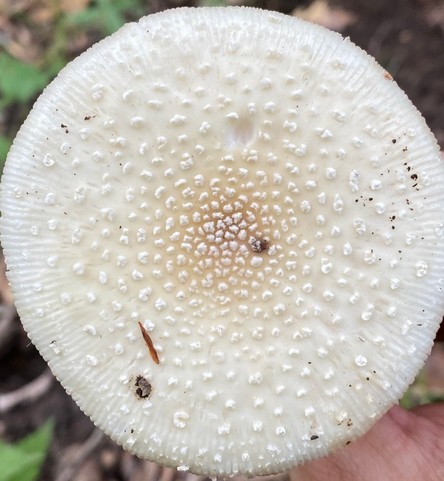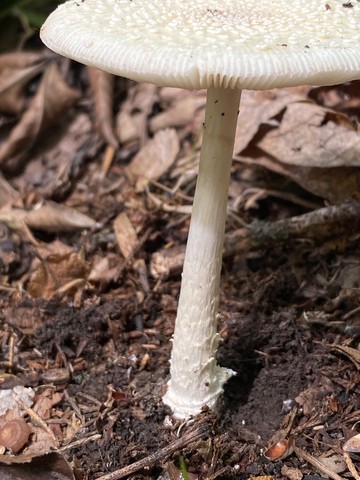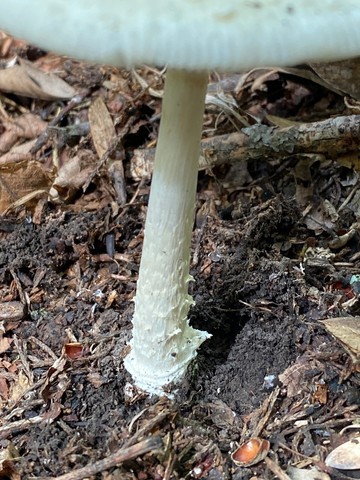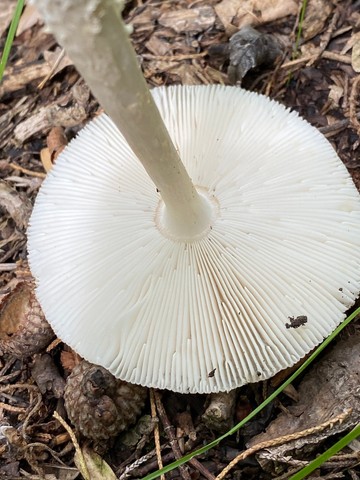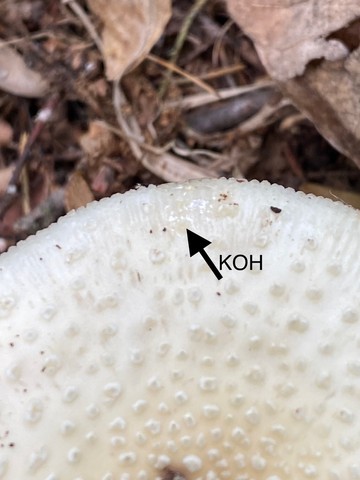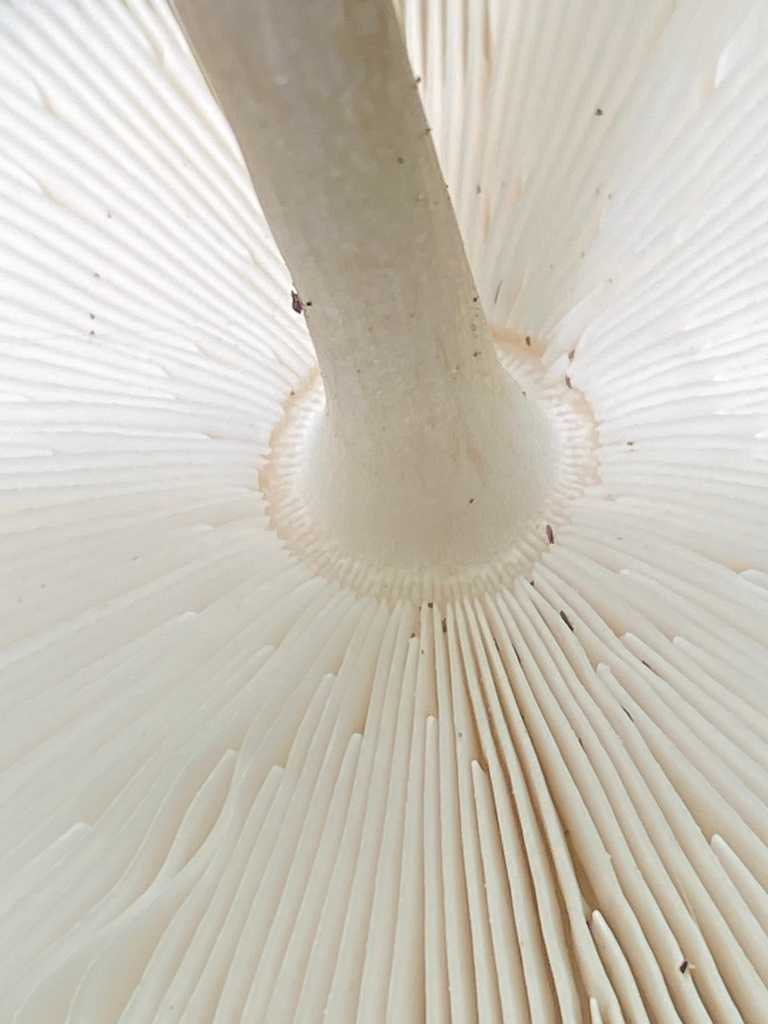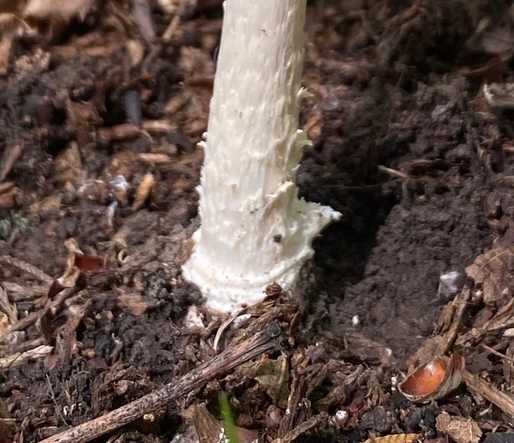White Panther
Amanita multisquamosa-01
Life > Fungi > Basidiomycota > Agaricomycotina > Agaricomycetes > Agaricomycetidae > Agaricales > Pluteineae > Amanitaceae > Amanita
Description
This is a presumed toxic, mycorrhizal mushroom growing on soil in the spring through fall. It can be found associated with Oak and other broadleaf trees east of the Great Plains.
It is mostly white, with a yellow or tan cap center. The cap is adorned with white, removable warts.
The gill attachment is free to nearly attached (acutely adnexed), and the gill spacing is crowded.
This species usually provides a skirt of tissue on the stem (annulus), but the skirt has either been eaten by bugs or removed by other means in this specimen. Note how difficult it can be to identify Amanitas because of clues (like the annulus) getting lost through time!
It has a bulbous base with a collar-like cup (volva) and sometimes transient velar tissue extending further up the stem (pictured).
This mushroom has the provisional name Amanita "multisquamosa-01" until it can be formally described.
July 12th, 2023 Field Characteristics
- Growing solitarily in open mixed oak/hickory woodland.
- Nearby Trees: Eastern Red Cedar, American Hophornbeam, Northern Red Oak, Ash, American Linden, and Shagbark Hickory.
- Cap adorned with removable warts.
- Lammellae serrated.
- No annulus present (potentially removed).
- Volva with concentric scaly rings.
- Smell: not distinctive.
- Taste: not distinctive.
- KOH: negative on cap.
References
Kuo, M. (2013, April). Amanita multisquamosa. Retrieved from the MushroomExpert.Com Web site: http://www.mushroomexpert.com/amanita_multisquamosa.html
